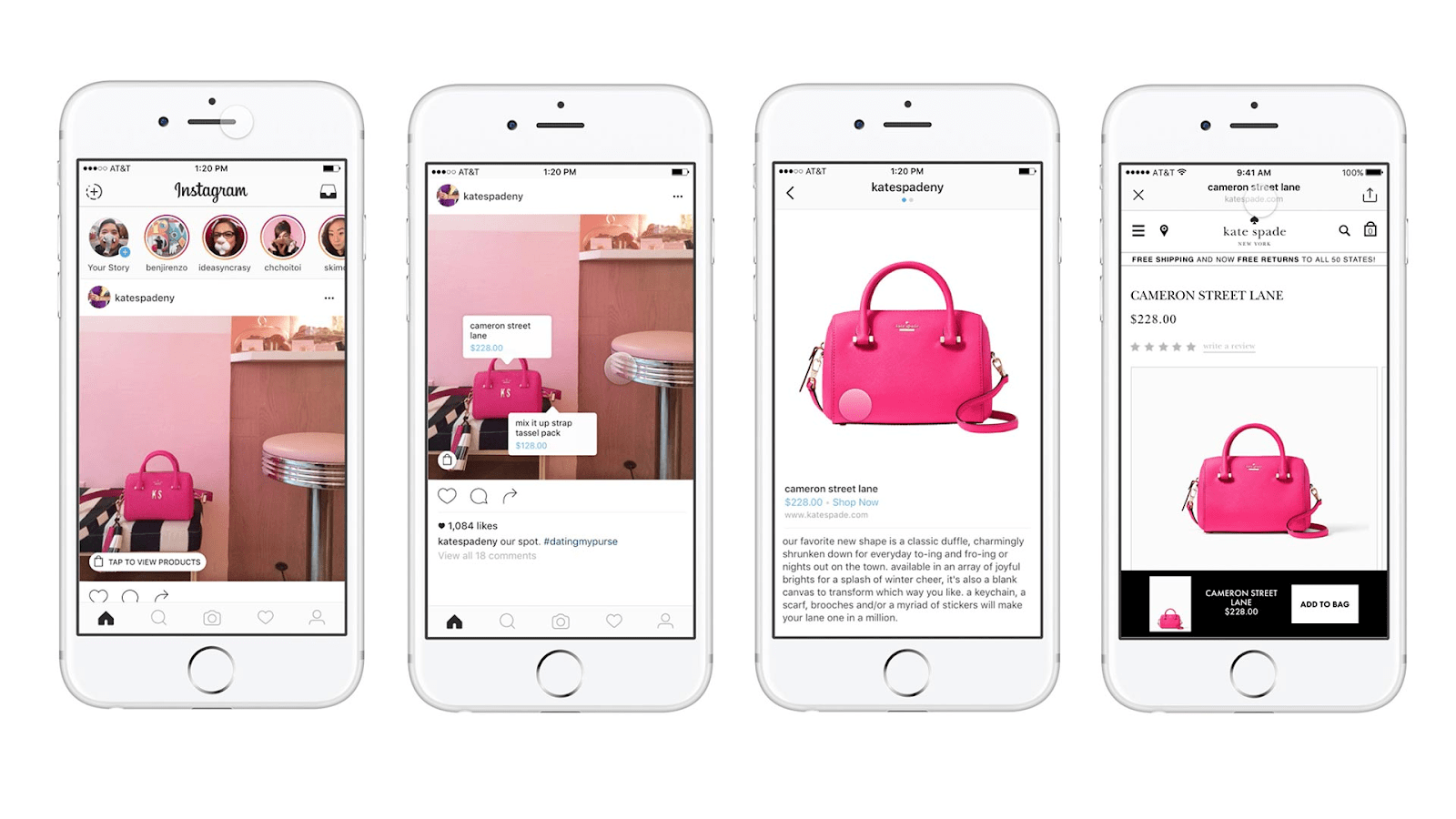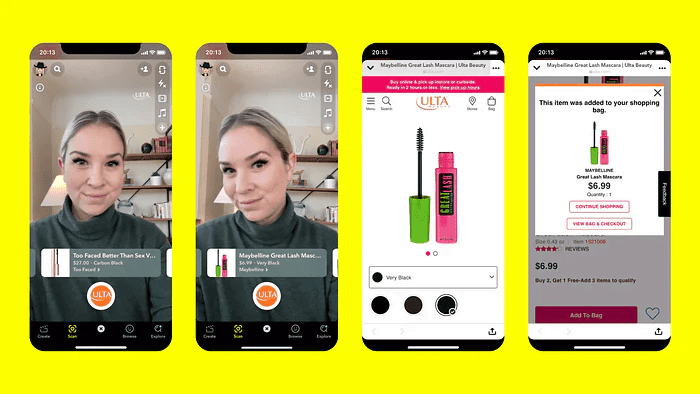Social media is an effective tool for establishing online connections between family members and friends. Social commerce was born when it developed into a marketplace where individuals could advertise, sell, and purchase goods.
The COVID-19 pandemic increased interest in social media by giving individuals a way to connect, stay up-to-date on news, and shop. Many companies now understand how crucial social media is for boosting sales and bringing in large sums of money.
[playht_player width=”100%” height=”175″ voice=”Mark”]
Social commerce has dominated the online retail industry because everyone wants a unique and personalized online experience.
By 2025, Statista predicts that purchases made through social media platforms will nearly triple globally. GWI estimates that 27% of Internet users worldwide use social media to find things to buy. As a result, in 2026, almost 50% of brands intend to raise their social commerce spending.
This guide is for you if you fall into such a category. This article investigates where we are and where we are going by carefully examining the data, patterns, and tactics influencing social commerce and what you have to be ready for in 2026.
What is social commerce?

The marketing and sale of goods through social platforms is known as “social commerce.” Users who are in the mood to shop can count on the top social media platforms like Instagram, Facebook, Twitter, and TikTok because they all have e-commerce capabilities.
Social commerce differs from a conventional approach to social media marketing in which customers view content from a brand and then go to their website to begin shopping. With social commerce, potential buyers can use social media apps to explore businesses, find products, and make purchases without ever leaving the app.
No more cumbersome sign-in processes for purchases or website redirects. Making it as simple and quick as possible for people to purchase the goods they see when skimming through their social media feeds is the aim of social commerce.
By 2025, the market for social commerce is predicted to reach $790 billion, more than doubling its size from 2020. Leading companies are leveraging social media’s expanding reach to engage consumers directly through the social platforms they use most frequently.
The different social-commerce platforms
Let’s examine the most well-liked social commerce platforms and how businesses can utilize them to increase sales.
With 1 billion active users and a 70% product discovery rate, it’s safe to say that Instagram is one of the most attractive social commerce platforms available.
With roughly 3.45 billion monthly users in 2021, the 17-year-old platform has enormous potential for expanding globally and harnessing new audiences.
Facebook Shops, introduced in 2020 during the COVID-19 pandemic, assisted small and medium-sized companies in making a move online and creating shoppable storefronts. Facebook Shops are not only mobile-friendly and cost-free, but they are also fully customizable and let you upload a current product catalog or create a brand-new one on the website.
TikTok
TikTok, a newcomer to the social commerce scene, is becoming more than just a platform for sharing quick videos. TikTok is a social shopping platform worth noticing now that it offers shoppable posts, live streaming shopping features, and possibilities for influencer marketing.
When it was first introduced in 2010, Pinterest was intended to be a platform for people to find inspiration for various facets of their lives, including interior design, health, wellness, and fashion.
However, beginning in 2015, Pinterest started giving shoppable pins to a select group of brands, enabling them to add a “Buy” button to their pins. Shortly after, this capability was made more broadly available to other brands.
Top Social commerce trends
Social commerce is being embraced by customers and businesses faster than expected. To establish a social commerce presence, savvy retailers must evaluate the following essential trends as soon as possible.
1. Instagram Maintains Its Position as the Leader in Social Commerce

With 72% of users saying they’ve purchased something after seeing a post, this image-focused social site is already a key player in e-commerce. Smart firms have taken advantage of Instagram’s interface style by posting content to keep customers up to date on what’s new in both stores and online.
With a comprehensive set of e-commerce tools and the top spot among social media platforms that consumers use to follow businesses, Instagram remains in a strong position concerning e-commerce and brand communications, and that’s unlikely to change in the months to come. Watch out for future Instagram trends and features, including tools for augmented reality (AR).
2. Customers give priority to videos
If you look at the long list of new features that social media behemoths have introduced over the past several years, you’ll see that they all share a passion for video. At a record-breaking moment, TikTok’s video-only network took over the social media scene. To compete with TikTok, Instagram released Reels.
Customers are relying more and more on video during their purchase process. Half of all shoppers prefer to watch product videos before making a purchase. Product videos can be used in a brand’s social commerce campaign to help iterate its video strategy.
Make a brief video that showcases your products in use. Make your videos interactive by including clickable calls to action that drive viewers to your social storefront at certain points in the video.
3. Live commerce

Live commerce combines live streaming with commerce via social media networks. When watching a Facebook Live (or comparable) video, viewers can interact with brands in real-time and make purchases on Facebook based on their responses.
According to internal Shopify data, worldwide app downloads for Livestream selling increased by 61 percent between January and September 2021, compared to the same period in 2020.
To capitalize on the craze, some US businesses have formed alliances with well-known social media networks, such as Sephora’s Facebook partnership. Others have developed their own platforms independent of the well-known ones. For instance, Nordstrom introduced its own live shopping network.
4. Enhanced Brand Reach Through Collaboration with Micro-Influencers
Despite the fact that this trend is not new, it is going to be one of the most well-liked trends in 2026. As micro-influencers are so popular on social media, smaller firms may reach a larger audience while also lowering their advertising costs.
Additionally, using simple segmentation and lower ad expenditures, micro-influencers are the most effective way to target specific groups. As compared to the influencers with large followings, they are also more accessible, genuine, and honest about paid collaborations, typically operating on barter agreements. Brands benefit from their popularity with their target demographic by increasing conversion rates. Here’s how you can approach influencers to collaborate with your business.
5. The customer experience will improve with 5G connectivity
In order to improve the social commerce experience for customers, marketers will be able to deliver faultless mixed reality interactions across a range of connected devices thanks to the global rollout of 5G wireless connectivity.
Consumers’ expectations are likely to be exceeded, and their experience will be improved if brands are able to use the power of 5G to provide them with an immersive and engaging shopping experience.
6. Use of user-generated content for marketing purposes

The fundamental elements of online communication on social media are user likes, comments, and content sharing. They take on the role of brand ambassadors, pushing the company’s content on social media, which has been quite advantageous for businesses.
Typically, brands covertly publish this information to promote user interaction since it makes users feel like members of the brand rather than target consumers. Additionally, it broadens the audience for social media efforts that promise solid returns on investment.
7. Social commerce will be included in more social media platforms

Facebook Shops, Instagram Shopping, and Pinterest Buyable Pins have all updated their features to keep up with social commerce trends. Another network attempting to spread social commerce practices to its 229 million active users is Snapchat. To differentiate itself from its rivals, the platform is enhancing its augmented reality and shoppability using lens-altered selfies.
8. Gen Alpha will be accustomed to social shopping
Gen Alpha consumers are likely to behave and think similarly to Gen Z consumers, with 97% of Gen Z customers citing social media as their primary source of inspiration while shopping. Look back to Balenciaga’s official statement from last year to see how Gen Alpha has already gotten its foot in the metaverse door by normalizing meta-fashion sales in games like Fortnite that’s run by Epic Games. The way that Gen Z and Gen Alpha view digital things is already similar to how their grandparents or parents viewed real tangible goods.
The fundamental fact that the generations who grew up with the internet place a great deal of trust in their preferred social media ecommerce platforms is the driving force behind social commerce growth. Social commerce essentially leverages that trust by giving customers what they need when they need it.
9. Sales of low-cost goods on social platforms will remain dominant
As in previous years, individuals will favor buying inexpensive goods over expensive ones on social media. It is anticipated that this tendency will continue into the near future.
While perusing their social media feeds, consumers are unlikely to make expensive purchases on the spur of the moment. When buying expensive products, they will probably prefer to do their investigations first and possibly try to view the actual product personally rather than take the chance of purchasing something online.
Additionally, social commerce is still very new, making it seem risky to certain consumers who haven’t become used to online shopping. They might be willing to spend $30 on a piece of jewelry, but they are much less likely to purchase a real diamond ring from a social networking page.
To counter this trend, prioritize your low-cost, well-liked products in your social commerce campaigns.
10. Chat commerce with chatbots
Shoppers spend more money when their buying experience is individualized. However, doing this at scale can be challenging, particularly on social media where you get little to no control over the technical setup of the channel.
Using chatbots is one way to address the customization issue. However limited their ability may be in terms of detail, chatbots can nonetheless quickly respond to queries from customers. They can also save time and money and foster a sense of trust, which has numerous advantages for businesses.
LEGO is among the companies that have used chatbots to improve the customer experience. The bot, known as Ralph, is accessible to customers and offers a terrific experience by instantly assisting individuals in selecting and purchasing the ideal product based on the customer’s age and interests.
11. The appeal of NFT will continue to rise
NFT, without a doubt, is the most popular buzzword since fidget spinners. However you define NFTs, they are here to stay and will continue to make news for a very long time.
The development of NFTs in social commerce is what everyone should be paying attention to. As augmented and virtual worlds represent the future of e-commerce, the development of NFTintegration, storage, and trading opportunities won’t slow down. NFT items already play a crucial role in monetizing both augmented and virtual landscapes.
NFTs are available in all (digital) sizes and shapes and are no longer firmly rooted in the realm of art sales. Men’s sneakers, clothing, watches, and jewelry are all currently being produced, offered for sale, and swapped for usage in numerous meta worlds.
12. Augmented reality

Augmented reality (AR) has fundamentally altered the standards of e-commerce. Customers can view the thing they wish to buy thanks to this technology, which facilitates the purchasing process. Augmented reality (AR) has a big impact on the shopping experience in various industries, such as fashion and home furnishings, because it allows the customer to have a better sense of the product without really seeing it.
It will be fascinating to see how that plays out on social media in the upcoming years, given that Gartner forecasted that 100 million customers would shop using augmented reality (AR) by 2020.
Final thoughts on social commerce trends in 2026
The rapid expansion of e-commerce this year will give marketers additional chances to develop social commerce experiences as social media continues to develop. Social commerce enables businesses to reach customers where it matters and provide frictionless purchase experiences. However, for marketers to be successful in social commerce, they must have a clear plan and use the appropriate channels to reach their target audience. If you’re new to social commerce, reputable channels like Facebook and Instagram are ideal places to start. And brands that want to advance should experiment and pick up innovations.

